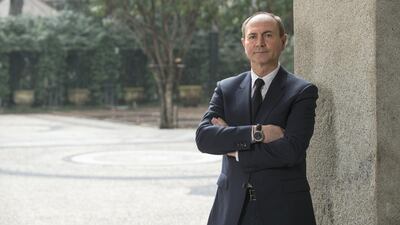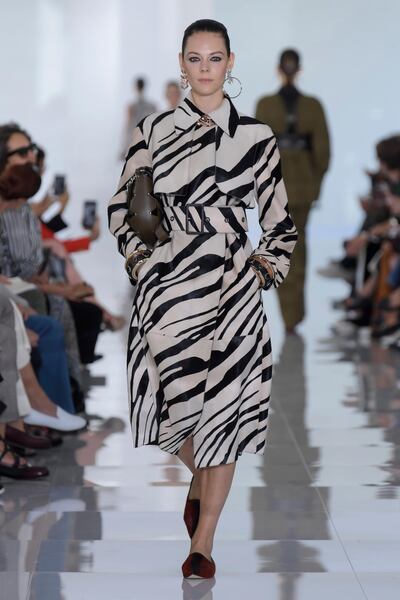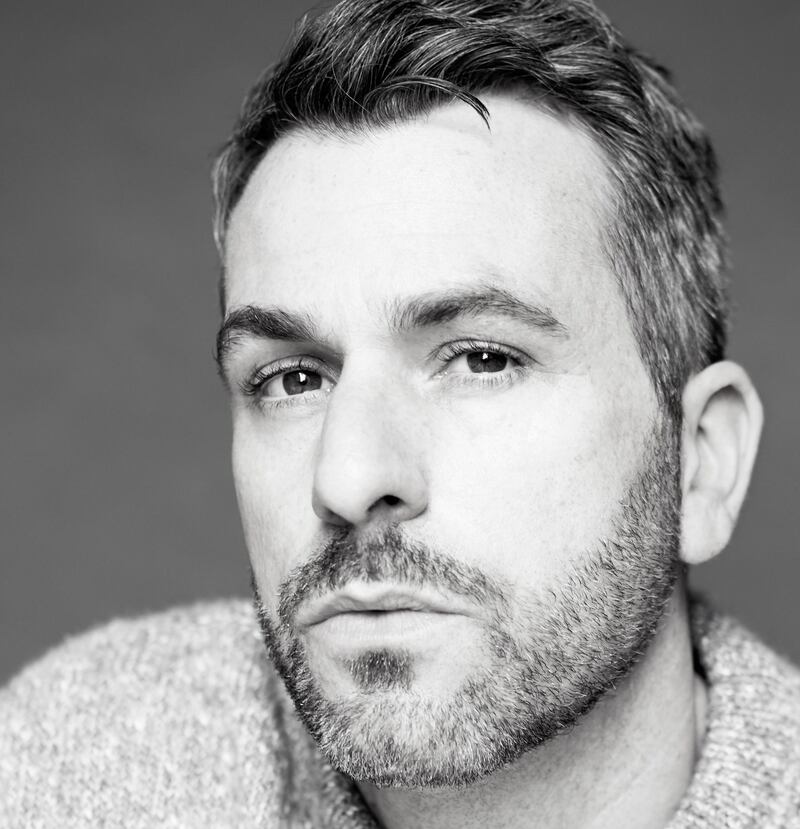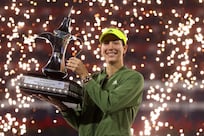Think of the name Roberto Cavalli and what springs to mind? Big, billowing dresses, acres of skin and endless reams of animal print? Thought so.
Unfortunately, that's how most people perceive the fashion house. Once viewed as utterly and undeniably fabulous, Roberto Cavalli became stuck in some sort of high-octane time warp, lodged somewhere between the 1970s and the 1990s.
Although founder Roberto Cavalli left the label some years ago – replaced as creative director by Peter Dundas – the house has seemingly been unable to escape the larger than life creative shadow of Roberto himself. Aesthetically, the brand has not really evolved, and has struggled to engage with a new, younger customer. Until now, perhaps.
In a fairly audacious move, as a replacement for Dundas, who quit in 2016, the brand opted for a little known designer, Paul Surridge. He started on July 1, with a little over eight weeks to imagine and create an entirely new collection.
Surridge was pretty much an unknown entity at this point (despite time at Burberry, Calvin Klein, Jil Sander and Z Zegna), but luckily the powers that be at Cavalli knew exactly what they were getting. And this is thanks largely to Gian Giacomo Ferraris, Cavalli’s chief executive. In the role for only a year, and with a CV that many would kill for, Ferraris has headed up many of the world’s biggest fashion brands, including Gucci, Prada and Jil Sander.

During a five-year stint at the Gucci Group, he worked with Balenciaga, Alexander McQueen, Bottega Veneta and YSL. He launched Stella McCartney in 2001, and is the man credited with returning Versace to profitability and lifting Jil Sander out of debt in just two years.
A visionary thinker, Ferraris was one of the first CEOs to embrace the see-now buy-now model, implementing it at Versace's diffusion line, Versus. This spurred triple digit growth within two years, resulting in a profit of €37 million (Dh163.4m) in 2015.
Ferraris and Surridge met while they were both working at Jil Sander. “Paul is a very intelligent guy,” Ferraris tells me over coffee in Dubai. Immaculately dressed and charming in that very Italian way, he had stepped off a plane only a few hours earlier.
“At my last company, we were lucky enough to pick up Paul, and he is a very hard worker. He is a person who can manage people, and who can transfer energy. We selected Paul not only because he is a designer, but because he can lead people.
"A company like Cavalli, it has a huge team, with over 100 people. We weren't looking for someone who would pass the day sketching, we wanted someone who could transmit his vision to other people, to delegate. This is the difference between Paul Sturridge, creative director, and being just a designer," Ferraris explains.
Nonetheless, having come from a menswear background, Surridge was a shock appointment for Cavalli, which has built its name on va-va-voom womenswear. “I have met lots of people who are extremely talented, but who come with an incredibly high ego. Who arrive at a company and pretend to reinvent it,” says Ferraris, although he refuses to name names, even when I try to push. “It is a matter of respect,” he gently chides.
________________
Read more:
[ The rise of the female creative director ]
[ The creative director of Les Benjamins on his Dubai inspiration ]
[ Former British Vogue editor-in-chief Alexandra Shulman on fashion and the future ]
________________
The debut spring/summer 2018 collection that Surridge delivered was certainly a departure from the Cavalli of old. Gone was the endless procession of floor sweeping red carpet fodder, and in its place was a bright, light and effortless parade of breezy jumpsuits with athletic but racy backs, along with vaguely military-style sharp-cut suiting, and floaty panel-cut dresses that elegantly ended mid-calf.
There was still some of the trademark zebra print – it would hardly be Cavalli without it – but this was reconfigured into barely there aqua on cream, and seen on wide-leg trousers, halster-style waistcoats and even a lightweight, printed ponyskin trench.
Luxe crocodile was carved into jean-cut trousers, complete with five pockets, while masculine shirts came with buttery leather or even lizard-skin collars. Surridge moved into more familiar territory with glamorous, plunging, beaded evening gowns. But these were rethought into a moveable sheath knitted in a super lightweight thread, allowing the wearer to actually sit down (something that is impossible in far too many red carpet looks). The collection is, in short, intensely practical, yet well executed and expensive-looking. It has a timeless quality but still makes a nod to current trends. The real shocker? Not a high heel in sight.
“In the shops we used to have only 15cm high shoes, so Paul created different heights, like the [flat] babouche. Because when she wakes up, not many women want to put on high heels,” Ferraris explains.
"Cavalli used to be for women who dress from 6pm to midnight. So Paul's message is about the day, more athletic and casual, more energetic. A contemporary woman. We now want to dress her from the moment she wakes up, to the moment she goes to bed. We are not going to stop making evening gowns, but now we are enlarging the selection.
“Paul Surridge is here to appeal to a new generation. Cavalli is always about being seductive, about joie de vivre, about colour, about glamour. But for today, not in the year 1990.”

Having headed up some of the world’s biggest brands, many are curious as to why Ferraris was tempted to join Cavalli, a once glorious label that has definitely seen better days.
“A lot of people ask me: Why Roberto Cavalli? When I select to work in a company, it must have two things — a distinctive DNA and international, historical brand awareness. Perhaps it has a dusty image or a few problems, but these two things, for me, are the two pillars needed to change customer perceptions and financial performance,” he says.
“Without DNA, you disappear. Look at Versace, Gucci, Jill Sander…. they are unsinkable. You can remove the label [from the clothes], but you still immediately recognise the work. This is what we think Paul is capable of; of transforming this distinctive DNA. In this one year that I have been with Cavalli, I have been rebalancing the costs, the turnover, all the things a normal, competent CEO will change. But to engage with a new generation? This is the challenge for Paul.
"Around the world, there are always women who want to be beautiful. The question is how to transfer this DNA onto the right silhouette, with new material, new research. This is something I cannot do. This is the role of Paul."
Listening to Ferraris outline how he intends to rebuild Cavalli into the major player it once was, the appointment of Surridge starts to sound increasingly shrewd. Known for its womenswear, Cavalli now has the means to expand into the entirely new field of menswear. “In Asia, if you do not have menswear, you are dead,” Ferraris acknowledges. “And Paul’s experience comes from menswear. Then we are in Tuscany, the centre of leather accessories in Italy. This is where Gucci and Ferragamo produce their leather goods.
"If you are a fashion company, you have to be obsessed with the new generation. Paul has this attitude, and we are lucky that Cavalli has an incredible archive, from the 1970s. Everything has been kept. It's an incredible source of inspiration, so Paul doesn't have to look at what others are doing. We have future now with Paul, and that makes us very happy." Ferraris pauses. "All I asked was just, please, don't copy Gucci," he says mischievously. "Because everyone is copying Gucci."










